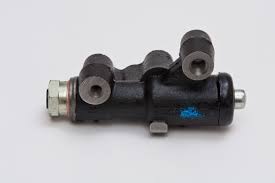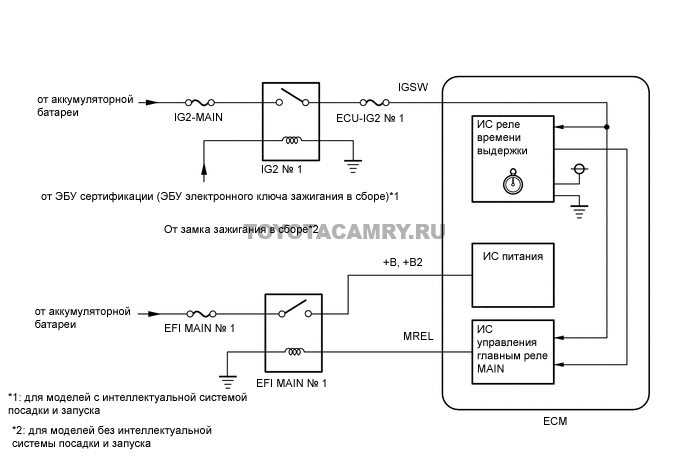
The device and principle of operation of the brake force regulator
Content
The brake force regulator, popularly "the sorcerer", is one of the components of the vehicle's braking system. Its main purpose is to counteract the skidding of the rear axle of the car during braking. In modern cars, the electronic EBD system has replaced the mechanical regulator. In the article we will find out what a “sorcerer” is, what elements it consists of and how it works. Consider how and why this device is adjusted, and also find out the consequences of operating a car without it.
Function and purpose of the brake force regulator
"Sorcerer" is used to automatically change the pressure of the brake fluid in the rear brake cylinders of the car, depending on the load acting on the car at the time of braking. The rear brake pressure regulator is used in both hydraulic and pneumatic brake drives. The main purpose of changing the pressure is to prevent wheel blocking and, as a result, skidding and skidding of the rear axle.
In some cars, in order to maintain their controllability and stability, in addition to the rear wheel drive, a regulator is installed in the front wheel drive.
Also, the regulator is used to improve the braking efficiency of an empty car. The force of adhesion to the road surface of a car with a load and without a load will be different, therefore, it is necessary to regulate the braking forces of the wheels of different axles. In the case of a loaded and empty passenger car, static regulators are used. And in trucks, an automatic brake force regulator is used.
In sports cars, another kind of "sorcerer" is used - a screw regulator. It is installed inside the car and regulates the balance of the brakes directly during the race itself. The setting depends on weather conditions, road conditions, tire conditions, etc.
Regulator device
It should be said that the "sorcerer" is not installed on vehicles equipped with an ABS system. It precedes this system and also prevents the rear wheels from locking up during braking to some extent.
Regarding the location of the regulator, in passenger cars it is located at the rear of the body, on the left or right side of the underbody. The device is connected to the rear axle beam by means of a pull rod and a torsion arm. The latter acts on the piston of the regulator. The regulator input is connected to the main brake cylinder, and the output is connected to the rear working ones.
Structurally, in passenger cars, the "sorcerer" consists of the following elements:
- the body;
- pistons;
- valves.
The body is divided into two cavities. The first is connected to the GTZ, the second is connected to the rear brakes. During emergency braking and tilting the front of the vehicle, pistons and valves block the brake fluid access to the rear working brake cylinders.
Thus, the regulator automatically controls and distributes the braking force on the wheels of the rear axle. It depends on the change in axle load. Also, the automatic “sorcerer” helps to speed up the unlocking of the wheels.
The principle of operation of the regulator
As a result of a sharp pressing of the driver on the brake pedal, the car “bites” and the rear part of the body rises. In this case, the front part, on the contrary, is lowered. It is at this moment that the brake force regulator begins to work.
If the rear wheels start braking at the same time as the front wheels, there is a high probability of the car skidding. If the wheels of the rear axle slow down later than the front, then the risk of skidding will be minimal.
Thus, when the vehicle is braked, the distance between the underbody and the rear beam increases. The lever releases the regulator piston, which blocks the fluid line to the rear wheels. As a result, the wheels are not blocked, but continue to rotate.
Checking and adjusting the "sorcerer"
If the braking of the car is not effective enough, the car is pulled to the side, there are frequent breakdowns into a skid - this indicates the need to check and adjust the "sorcerer". To check, you need to drive the car onto an overpass or inspection pit. In this case, defects can be detected visually. Often, defects are found in which it is not possible to repair the regulator. We have to change it.
As for the adjustment, it is better to carry out it, also setting the car on an overpass. The setting of the regulator depends on the position of the body. And it must be carried out both during each MOT and when replacing suspension parts. Adjustment is also necessary after repair work on the rear beam or when replacing it.
The adjustment of the “sorcerer” must also be carried out in the event that, during heavy braking, the rear wheels are locked before the front wheels are locked. This can cause the vehicle to skid.
Is a “sorcerer” really needed?
If you remove the regulator from the brake system, a rather unpleasant situation may arise:
- Synchronous braking with all four wheels.
- Sequential locking of wheels: first rear, then front.
- Car skidding.
- The risk of a traffic accident.
The conclusions are obvious: it is not recommended to exclude the brake force regulator from the brake system.
